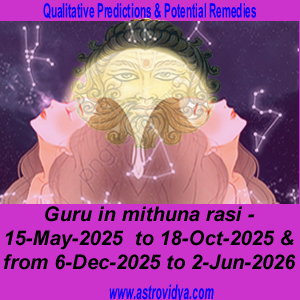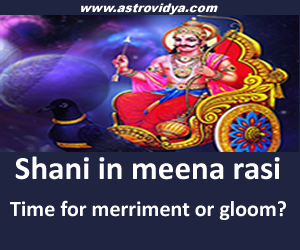


Open Sesame
Write-ups at a glance
Write-ups at a glance
Search by Google:


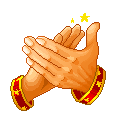
Disclaimer: All material on the site, www.astrovidya.com are for entertainment purposes only and no guarantee is implied as to the accuracy of contents or advertisements contained in or linked to this website. The contents are based on ancient cannons of astrology and should not be interpreted as legal, financial, political, religious, ethical, medical, psychological, psychiatric or any other specialist advice. The user is wholly responsible for his choices, decisions, judgments and risks. In no event shall the site be liable for any direct, indirect, incidental, punitive or consequential damages of any kind whatsoever with respect to its service, materials and products. By using the services you confirm that you are over 18 and that you understand and agree with these terms of Disclaimer. If you disagree with any part of these terms and conditions, please egress the website.
MATCHING OF HOROSCOPES
4) Yoni Koota: Largely marriages hetero sexual, worldwide. Marriage is a secure way of obtaining sexual pleasure and that adds to love. Procreation is an important purpose of marriage, and so this koota assumes considerable significance. This compatibility test carries 4 marks both in North and South India. Every star is assigned an animal. An ideal compatibility results when both the boy's and girl's stars fall under the same animal. Example, if the stars of boy and girl are Rohini and Mrigasira, they have utmost compatibility, as both of them are under Sarpa yoni. The stars are classified in the following method:-
Horse : Aswini and Satabhisha; Elephant : Bharani and Revati; Sheep (goat) : Pushya and Krittika; Serpent : Rohini and Mrigasira; Dog : Moola and Aridra; Cat : Aslesha and Punarvasu; Rat : Makha and Pubba; Cow :Uttaraphalguni and Uttarabhadra; Buffalo : Swati and Hasta; Tiger : Visakha and Chitra; Hare (deer in South India): Jyeshta and Anuradha; Monkey : Poorvashadha and Sravana; Lion : Poorvabhadra and Danishta; Mongoose : Uttarashadha.
Horse : Aswini and Satabhisha; Elephant : Bharani and Revati; Sheep (goat) : Pushya and Krittika; Serpent : Rohini and Mrigasira; Dog : Moola and Aridra; Cat : Aslesha and Punarvasu; Rat : Makha and Pubba; Cow :Uttaraphalguni and Uttarabhadra; Buffalo : Swati and Hasta; Tiger : Visakha and Chitra; Hare (deer in South India): Jyeshta and Anuradha; Monkey : Poorvashadha and Sravana; Lion : Poorvabhadra and Danishta; Mongoose : Uttarashadha.
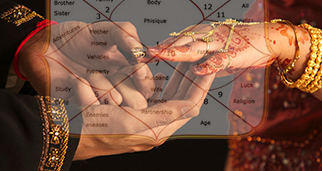
When both the stars represent same animal, the matching gets full 4 marks. Cow and tiger; elephant and lion; horse and buffalo; dog and hare; rat and cat; sheep and monkey; snake and mongoose are declared vaira yonis (enemies). The stars of mutual enemies do not agree. I have observed that marriages conducted in enemy group of stars proved disastrous. In some parts in West Cost of India, the the stars are again classified as male and female within the animal classification. Under this scheme, it is desired that a man with male star should marry a girl with female star, within the same animal group. Male stars are Ashwini, Pushya, Hasta, Anuradha, Sravana, Poorva bhadra and Uttara bhadra. Neutral Stars are Mrigasira, Moola and Shatabhisha. The remaining are female stars. Further examination of 12th and 8th houses are called for. When the matching of the chart is done for the purposes of business partnership, this compatibility may safely be set aside.
5) Rasyadipati koota [Grahamaitri koota in North India]: The number of units for this koota is 5. This koota is equally important as Rasi koota because it considers the relationship between the lords of rasis. The rasi lords of boy an girl should be either friendly or neutral. Some astrologers consider the temporary relationship (tatkalika) along with natural relationship (naisargika) relationship of planets. I feel, tatkalika relationship (planets in close proximity become friends like in 10-11-12-2-3 houses). The very concept of tatkalika relationship is dubious as the planet in 5th or 9th surely gives good results, though they are classified as tatkalika enemy planets. If lords of rasis of the girl an boy are friends, the Rasi koota gets full marks. When one is a friend and the other is a neutral, it is permissible. When both are neutral [one planet is friend and another is neural or enemy], this koota turns out to be very ordinary. If the lords are enemies [one is neural and the other is enemy or both are enemies to each other], the koota contributes no marks. When such favourable relationship is not found in rasi chart, some optimists search for favourable relationship in navamsha chart. Well, this deviation more of convenience than reasoning. A match I had rejected was declared excellent based on navamsha chart by another astrologer - the father of the girl was a 'forceful character'.
6) Gana Koota : This is the matching of the human minds and their temperament. The stars are divided into three categories. Deva, Manava and Rakshasa indicating Satwa, Rajo and Tamo gunas respectively. This agreement confers general happiness of marital life. It can not be said that a person belong purely to one of these ganas. Everybody has a blend of all these three gunas - in the mornings, satwa guna predominates, rajasika in the day time and tamo guna during night fall. A Deva gana person can marry a Deva, a Manusha gana person can marry a Manusha and a Rakshasa can marry a Rakshasa. Deva man should not marry a Rakshasa girl. But marriage between a Rakshasa and a Manusha persons is of secondary consideration.
Deva Gana stars: Punarvasu, Pushya, Swati, Hasta, Sravana, Revati, Anuradha, Mrigasira and Aswini
Manusha Gana stars: Rohini, Pubba, Poorvashadha, Poorvabhadra, Bharani, Aridra, Uttara, Uttarashadha and Uttarabhadra
Rakshasa Gana stars: Krittika, Aslesha, Makha, Chitta, Visakha, Jyeshta, Moola, Dhanishta and Satabhisha
6) Gana Koota : This is the matching of the human minds and their temperament. The stars are divided into three categories. Deva, Manava and Rakshasa indicating Satwa, Rajo and Tamo gunas respectively. This agreement confers general happiness of marital life. It can not be said that a person belong purely to one of these ganas. Everybody has a blend of all these three gunas - in the mornings, satwa guna predominates, rajasika in the day time and tamo guna during night fall. A Deva gana person can marry a Deva, a Manusha gana person can marry a Manusha and a Rakshasa can marry a Rakshasa. Deva man should not marry a Rakshasa girl. But marriage between a Rakshasa and a Manusha persons is of secondary consideration.
Deva Gana stars: Punarvasu, Pushya, Swati, Hasta, Sravana, Revati, Anuradha, Mrigasira and Aswini
Manusha Gana stars: Rohini, Pubba, Poorvashadha, Poorvabhadra, Bharani, Aridra, Uttara, Uttarashadha and Uttarabhadra
Rakshasa Gana stars: Krittika, Aslesha, Makha, Chitta, Visakha, Jyeshta, Moola, Dhanishta and Satabhisha
Some people opine that marriage between a Rakshasa man and a Deva girl is all right. Some astrologers opine that Gana koota applies only to 14 stars from the star considered. That is to say, aswini of deva gana can not be matched with kritika of rakshasa gana but can be matched with chitra, vishakha, jesta, moola, dhanista and satabisha of the very same rakshasa gana. I have not found any differences in my experience between people born in kritika and chitra. I hold that the rule should be applied to all the stars beyond the 14th star. The number of units of compatibility assigned to this koota is 6.
7) Rasi Koota: [Bha koota or Bhoota koota in North India]: The number of units for Rasi koota is 7. Counted from girl's rasi, 2, 4, 6, 8, 12th rasis in the boy's chart should be rejected. Following results are mentioned in some classical texts:
(i) If the boy's rasi be 2nd from the girl's - loss of wealth
(ii) If the boy's rasi be 5th from the girl's - loss of children
(iii) If the boy's rasi be 6th from the girl's - worries, difficulties, diseases
(iv) If the boy's rasi be 3rd from the girl's - grief
(v) If the boy's rasi be 4th from the girl's - enmity
(vi) If the boy's rasi be 6th or 8th or 12th from the girl's - separation
Some astrologers consider reverse matching from boy's to girl's rasi in rasi koota and mahendra koota. This is against the very spirit of matching of horoscopes. No matter whether the girl is the daughter or perspective daughter-in-law, the matching should invariably be considered with reference to girl's rasi and star.
7) Rasi Koota: [Bha koota or Bhoota koota in North India]: The number of units for Rasi koota is 7. Counted from girl's rasi, 2, 4, 6, 8, 12th rasis in the boy's chart should be rejected. Following results are mentioned in some classical texts:
(i) If the boy's rasi be 2nd from the girl's - loss of wealth
(ii) If the boy's rasi be 5th from the girl's - loss of children
(iii) If the boy's rasi be 6th from the girl's - worries, difficulties, diseases
(iv) If the boy's rasi be 3rd from the girl's - grief
(v) If the boy's rasi be 4th from the girl's - enmity
(vi) If the boy's rasi be 6th or 8th or 12th from the girl's - separation
Some astrologers consider reverse matching from boy's to girl's rasi in rasi koota and mahendra koota. This is against the very spirit of matching of horoscopes. No matter whether the girl is the daughter or perspective daughter-in-law, the matching should invariably be considered with reference to girl's rasi and star.
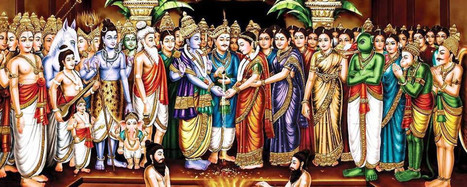
8) Nadi Koota: It is considered to a most important as it carries 8 marks. Nadi, in Sanskrit means temperaments like vatha (wind), pitha (bile) and kapha (phlegm) and it also means nerves and stars. This koota is said to show spiritual nature, physique, internal metabolism and hereditary characteristics. The stars are classified as Vatha (wind), Pitha (bile) and Kapha nadi. It should be ensured that both partner's nadis are different.
Vatha: Aswini, Punarvasu, Uttara, Hasta, Jyestha, Moola, Satabhisha, Poorvabhadra and Aridra
Pitha: Bharani, Pushya, Poorava phalguni, Chitta, Anuradha, Poorvashadha, Dhanistha, Uttarabhadra and Mrigasira
Kapha: Krittika, Aslesha, Makha, Swati, Vishakha, Uttarashadha, Sravana, Revati and Rohini
In the event both the stars fall in the same nadi, then the padas (charanas) of stars are considered which seems to be a method of convenience. If the star of both the boy and girl is Aswini, there is nadi dosha. In such an event the marriage is permitted, if the boy's star is Ashwini 2nd or 3rd or 4th padas. The pattern of arrangement of stars, pada wise is given below:-
Vatha: Aswini, Punarvasu, Uttara, Hasta, Jyestha, Moola, Satabhisha, Poorvabhadra and Aridra
Pitha: Bharani, Pushya, Poorava phalguni, Chitta, Anuradha, Poorvashadha, Dhanistha, Uttarabhadra and Mrigasira
Kapha: Krittika, Aslesha, Makha, Swati, Vishakha, Uttarashadha, Sravana, Revati and Rohini
In the event both the stars fall in the same nadi, then the padas (charanas) of stars are considered which seems to be a method of convenience. If the star of both the boy and girl is Aswini, there is nadi dosha. In such an event the marriage is permitted, if the boy's star is Ashwini 2nd or 3rd or 4th padas. The pattern of arrangement of stars, pada wise is given below:-
| Vatha | Pitha | Kapha |
| Aswini 1 | Aswini 2 | Aswini 3 |
| Bharani 2 | Bharani 1 | Aswini 4 |
| Bharani 3 | Bharani 4 | Krittika 1 |
| Krittika 4 | Krittika 3 | Krittika 2 |
| and so on...... | ||
The kootas mentioned in earlier articles, are followed all over India. In addition to the those, following four are exclusively employed in only South India only. These are 'desirable' kootas which do not carry any marks!
1) Rajju koota: The koota is treated as 'desirable' like Mahendra and Stree Deerga koota, but no marks have been allotted! This koota is considered to ascertain the strength and span of married life. The stars are grouped into five types:
Pada rajju: Aswini, Aslesha, Makha, Jyeshta, Moola and Revati;
Kati rajju: Bharani, Pushyami, Pubba, Anuradha, Poorvashadha and Uttarabhadra;
Udara rajju: Krittika, Punarvasu, Uttara, Visakha, Uttarashadha and Poorvabhadra;
Kanta rajju: Rohini, Aridra, Hasta, Swati. Sravana, and Satabhisha;
Shiro rajju: Dhanishta, Chitta and Mrigasira.
It is said, if both the stars of the boy and girl come in the same portion as foot or head or neck etc there is no agreement. If they happen to be in the same line as head, the husband will die, if in the neck, the wife will meet death, if in the middle loss of children, if under thigh extreme poverty and if under foot wanderings under pitiable conditions. From the above arrangement, it seems certain angular distance is considered in making above bifurcation. Utmost importance is given to this koota, though this carries no marks.
2) Vedha: This koota also does not carry any marks. Generally, this is confused with vedha that is caused between the planets in transit or with 7th star in dina koota. In this koota only certain distance from star causes vedha and it is not necessarily the 7th. These stars are said to be mutually opposite to each other. Vedha is said to exist between Aswini - Jyeshta; Bharani - Anuradha; Krittika - Visakha; Rohini- Swati; Aridra - Sravana Punarvasu- Uttarashadha; Pusayami- Poorvashadha; Aslesha - Moola; Makha- Revati; Pubba - Uttarabhadra; Uttara - Poorvabhadra; Hasta - Satabhisha and Mrigasira - Dhanishta. My respected grandfather firmly believed in this arrangement. And so I did, until I realised that many couple falling into vedha group lived happily. Individual analysis only will hold the key than mere searching of koota agreement. A minor group of astrologers in old times followed classification vedha as Kanthavedha, Kativedha, Padavedha, Shirovedha and Kukshivedha. This classification was most similar to rajju koota.
3) Mahendra koota : Some astrologers consider that Mahendra koota promotes well-being and life span and some consider that it promotes progeny. Counting from that of the girl if the star of the boy comes as 4, 7, 10, 13, 16, 22, 25 agree. This confers wealth and children for the couple.
4) Stree Deergha koota : It ensures wealth and prosperity for considerable time. Counting from the star of the girl, the boy's star should not be less than 9th (some consider 7). Example, if the girl's star is Ashwini, the boy's star should be Makha (the 10th star) and after that. The koota is also considered as 'desirable' but no marks have been allotted. This koota is ignored by some astrologers, if the Rasi Kuta and Graha Maitri obtain the required result. Some authorities consider the distance of 15 nakshatras.
Following kootas are also mentioned in ancient classical texts but are not in vogue:-
Gotra Koota: All the casts, sects and sub-sects attribute their origin to a great person, mostly rishies. Swa gotra (same gotra) marriages are prohibited as it such marriages cause inter-mingling of population. Yet, inter-cast marriages are not much welcome! In such marriages, it is better to see whether the culture, religious attitudes, food habits etc., are compatible or at least that the partners are willing to compromise. In astrological terms, the stars are classified into seven gotras as follows:-
Aswini, Pushya, Swati : Maricha gotra
Bharani, Aslesha, Visakha and Shravana: Vasisthta gotra
Kritika, Magha, Anuradha and Dhanista: Angirasa gotra
Rohini, Purvaphalguni, Jyesta and Shatabhisha: Atri gotra
Mrigashira, Uttaraphalguni, Moola and Purvabhadra: Pulastya gotra
Aridra, Hasta, Purvashadha and Uttarabhadra: Pulaha gotra
Punarvasu, Chitra, Uttarashadha and Revati: Kritu gotra
It is not clear as to how the stars have been represented by certain rishi. However, this koota is not followed since a long time. In most of the the marriages the actual lineage (gotra) is considered.
Pakshi Koota: If both the stars have the same bird, the matching is excellent. If the birds friendly to each other, it is moderate; if inimical, the result would be bad. The birds in pakshi koota are classified as follows:-
Stars from Aswini to Mrigashira: Bherunda( )
Stars from Aridhra to Purvaphalgui: Pingala
Stars from Uttaraphalguni to Anuradha: Kaka (crow)
Stars from Jyesta to Shravana: Kukkuta (cock)
Stars from Dhanista to Revati: Mayura (peacock)
Since many decades this koota is not followed and many reputed astrologers set this koota aside.
Bhoota Koota: Generally rasi koota is referred to as bhoota kotta in North India. But, this koota is not between rasis but is the relationship between five elements (ancha bhoota). Stars are assigned elements as follows:-
Stars from Aswini to Mrigashira: Bhoohu (earth)
Stars from Aridhra to Purvaphalgui: Apaha (water)
Stars from Uttaraphalguni to Visakha : Agni (fire)
Stars from Anuradha to Sravana : Vayu (air)
Stars from Dhanista to Revati: Akasha (Ether)
If both have the same element, it is auspicious. Combination of fire and air is also beneficial. Earth element, can be matched with any other element. That means, water and fire are inimical and such union is forbidden. Any student of astrology knows in his basic lessons that the rasis are assigned the elements. Mesha, Simha and dhanus belong to agni tatwa; Vrishabha, kanya and makara belong to pritvi tatwa; Mithuna, tula and kumbha belong to vayu tatwa; Kataka, vrischika and meena belong to jala tatwa. Matching is done on the lines described above. This koota is no more followed, either with reference to stars or rasis.
Matching is done in the Western World using the above principles of rasi. However, the rasi referred in Indian horoscope is different from what is referred in Western Astrology. Sayana (without deduction of ayanamsha) chart is followed here and rasi is not considered but sun-sign (position of sun instead of chandra).
Varshatmaka Koota (Age Agreement): If boy's age is thrice the age of girl the match is excellent. If it is double, moderate. If the boy is younger than the girl, such marriage is not permissible. Some hold that these rules were quite scientific in ancient times. If the girl is 16, the boy should be 32, if not 48. Second part of the rule suggest that, at least they should be of equal age! I can not comprehend how a girl of 16 years can take a decision of marriage. In the times, when cardiac problems are most common even in middle ages, the duration of married life would be between 7 to 20 years only. I hold that age, caste, colour, money, prestige, position in society are not hurdles of marriage. The orthodox astrologers should know that the 'arrow of time' does not move backwards!
Another important criteria is classification of stars as dosha yukta, though this koota is not featured separately in any classical texts.
Dosha yukta nakshatra s: It is generally (unfortunately popularly believed, particularly in Karnataka) that a girl born in Vishakha is said to bring about the destruction of her husband's younger brother. Some hold that Vishakha the last pada should to be rejected and not the first three. Girl born in the first pada of Moola is to be rejected, as it is said to cause the death of the father-in-law, other padas are considered harmless. Similarly, a girl born in Jyesta, first pada is said to cause problems to her husband's elder brother and not other padas. So, even with libaralised rule, the girls of Visakha last pada, first pada of moola and first pada of jesta are rejected without any rhyme and reason!
These are mere generalizations which do not hold water. A man born in Rohini does not inherit great lands. A man born on Rama Navami does not possess great qualities of Lord Rama. I have seen one most corrupt high officer and his name was Harishchandra! It is safer and desirable to ignore such meaningless dictums propagated in certain panchangas.
1) Rajju koota: The koota is treated as 'desirable' like Mahendra and Stree Deerga koota, but no marks have been allotted! This koota is considered to ascertain the strength and span of married life. The stars are grouped into five types:
Pada rajju: Aswini, Aslesha, Makha, Jyeshta, Moola and Revati;
Kati rajju: Bharani, Pushyami, Pubba, Anuradha, Poorvashadha and Uttarabhadra;
Udara rajju: Krittika, Punarvasu, Uttara, Visakha, Uttarashadha and Poorvabhadra;
Kanta rajju: Rohini, Aridra, Hasta, Swati. Sravana, and Satabhisha;
Shiro rajju: Dhanishta, Chitta and Mrigasira.
It is said, if both the stars of the boy and girl come in the same portion as foot or head or neck etc there is no agreement. If they happen to be in the same line as head, the husband will die, if in the neck, the wife will meet death, if in the middle loss of children, if under thigh extreme poverty and if under foot wanderings under pitiable conditions. From the above arrangement, it seems certain angular distance is considered in making above bifurcation. Utmost importance is given to this koota, though this carries no marks.
2) Vedha: This koota also does not carry any marks. Generally, this is confused with vedha that is caused between the planets in transit or with 7th star in dina koota. In this koota only certain distance from star causes vedha and it is not necessarily the 7th. These stars are said to be mutually opposite to each other. Vedha is said to exist between Aswini - Jyeshta; Bharani - Anuradha; Krittika - Visakha; Rohini- Swati; Aridra - Sravana Punarvasu- Uttarashadha; Pusayami- Poorvashadha; Aslesha - Moola; Makha- Revati; Pubba - Uttarabhadra; Uttara - Poorvabhadra; Hasta - Satabhisha and Mrigasira - Dhanishta. My respected grandfather firmly believed in this arrangement. And so I did, until I realised that many couple falling into vedha group lived happily. Individual analysis only will hold the key than mere searching of koota agreement. A minor group of astrologers in old times followed classification vedha as Kanthavedha, Kativedha, Padavedha, Shirovedha and Kukshivedha. This classification was most similar to rajju koota.
3) Mahendra koota : Some astrologers consider that Mahendra koota promotes well-being and life span and some consider that it promotes progeny. Counting from that of the girl if the star of the boy comes as 4, 7, 10, 13, 16, 22, 25 agree. This confers wealth and children for the couple.
4) Stree Deergha koota : It ensures wealth and prosperity for considerable time. Counting from the star of the girl, the boy's star should not be less than 9th (some consider 7). Example, if the girl's star is Ashwini, the boy's star should be Makha (the 10th star) and after that. The koota is also considered as 'desirable' but no marks have been allotted. This koota is ignored by some astrologers, if the Rasi Kuta and Graha Maitri obtain the required result. Some authorities consider the distance of 15 nakshatras.
Following kootas are also mentioned in ancient classical texts but are not in vogue:-
Gotra Koota: All the casts, sects and sub-sects attribute their origin to a great person, mostly rishies. Swa gotra (same gotra) marriages are prohibited as it such marriages cause inter-mingling of population. Yet, inter-cast marriages are not much welcome! In such marriages, it is better to see whether the culture, religious attitudes, food habits etc., are compatible or at least that the partners are willing to compromise. In astrological terms, the stars are classified into seven gotras as follows:-
Aswini, Pushya, Swati : Maricha gotra
Bharani, Aslesha, Visakha and Shravana: Vasisthta gotra
Kritika, Magha, Anuradha and Dhanista: Angirasa gotra
Rohini, Purvaphalguni, Jyesta and Shatabhisha: Atri gotra
Mrigashira, Uttaraphalguni, Moola and Purvabhadra: Pulastya gotra
Aridra, Hasta, Purvashadha and Uttarabhadra: Pulaha gotra
Punarvasu, Chitra, Uttarashadha and Revati: Kritu gotra
It is not clear as to how the stars have been represented by certain rishi. However, this koota is not followed since a long time. In most of the the marriages the actual lineage (gotra) is considered.
Pakshi Koota: If both the stars have the same bird, the matching is excellent. If the birds friendly to each other, it is moderate; if inimical, the result would be bad. The birds in pakshi koota are classified as follows:-
Stars from Aswini to Mrigashira: Bherunda( )
Stars from Aridhra to Purvaphalgui: Pingala
Stars from Uttaraphalguni to Anuradha: Kaka (crow)
Stars from Jyesta to Shravana: Kukkuta (cock)
Stars from Dhanista to Revati: Mayura (peacock)
Since many decades this koota is not followed and many reputed astrologers set this koota aside.
Bhoota Koota: Generally rasi koota is referred to as bhoota kotta in North India. But, this koota is not between rasis but is the relationship between five elements (ancha bhoota). Stars are assigned elements as follows:-
Stars from Aswini to Mrigashira: Bhoohu (earth)
Stars from Aridhra to Purvaphalgui: Apaha (water)
Stars from Uttaraphalguni to Visakha : Agni (fire)
Stars from Anuradha to Sravana : Vayu (air)
Stars from Dhanista to Revati: Akasha (Ether)
If both have the same element, it is auspicious. Combination of fire and air is also beneficial. Earth element, can be matched with any other element. That means, water and fire are inimical and such union is forbidden. Any student of astrology knows in his basic lessons that the rasis are assigned the elements. Mesha, Simha and dhanus belong to agni tatwa; Vrishabha, kanya and makara belong to pritvi tatwa; Mithuna, tula and kumbha belong to vayu tatwa; Kataka, vrischika and meena belong to jala tatwa. Matching is done on the lines described above. This koota is no more followed, either with reference to stars or rasis.
Matching is done in the Western World using the above principles of rasi. However, the rasi referred in Indian horoscope is different from what is referred in Western Astrology. Sayana (without deduction of ayanamsha) chart is followed here and rasi is not considered but sun-sign (position of sun instead of chandra).
Varshatmaka Koota (Age Agreement): If boy's age is thrice the age of girl the match is excellent. If it is double, moderate. If the boy is younger than the girl, such marriage is not permissible. Some hold that these rules were quite scientific in ancient times. If the girl is 16, the boy should be 32, if not 48. Second part of the rule suggest that, at least they should be of equal age! I can not comprehend how a girl of 16 years can take a decision of marriage. In the times, when cardiac problems are most common even in middle ages, the duration of married life would be between 7 to 20 years only. I hold that age, caste, colour, money, prestige, position in society are not hurdles of marriage. The orthodox astrologers should know that the 'arrow of time' does not move backwards!
Another important criteria is classification of stars as dosha yukta, though this koota is not featured separately in any classical texts.
Dosha yukta nakshatra s: It is generally (unfortunately popularly believed, particularly in Karnataka) that a girl born in Vishakha is said to bring about the destruction of her husband's younger brother. Some hold that Vishakha the last pada should to be rejected and not the first three. Girl born in the first pada of Moola is to be rejected, as it is said to cause the death of the father-in-law, other padas are considered harmless. Similarly, a girl born in Jyesta, first pada is said to cause problems to her husband's elder brother and not other padas. So, even with libaralised rule, the girls of Visakha last pada, first pada of moola and first pada of jesta are rejected without any rhyme and reason!
These are mere generalizations which do not hold water. A man born in Rohini does not inherit great lands. A man born on Rama Navami does not possess great qualities of Lord Rama. I have seen one most corrupt high officer and his name was Harishchandra! It is safer and desirable to ignore such meaningless dictums propagated in certain panchangas.



